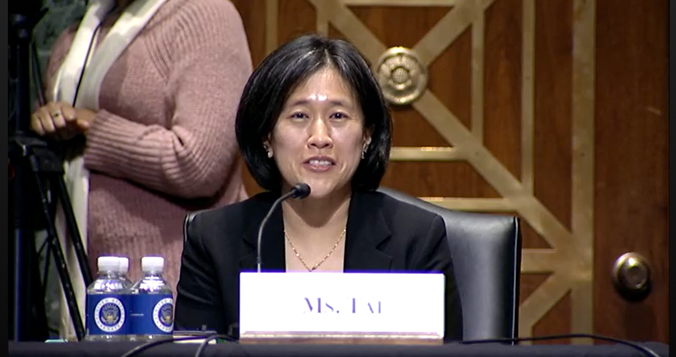
While the talks will be important in the effort to rein in excess steel capacity, it is essential they bring about measurable, enforceable results that will prevent another devastating surge in imports.
The United States and European Union on Monday jointly announced that they will hold talks to address global steel and aluminum overcapacity.
It’s a significant milestone in the long-running effort to tackle the global steel glut, which significantly threatens the viability of America’s steel and aluminum industries. Prior to the implementation of “Section 232” tariffs in 2018, thousands of workers had been laid off and dozens of plants had closed because of dumped steel and aluminum.
And that threatened America’s national and economic security, since steel and aluminum are needed to build everything from warships and aircraft carriers to critical infrastructure like bridges, pipelines and the electric grid.
The good news? Section 232 was effective, allowing the domestic industry to recover after years of unfair trade. A March 2021 report from the Economic Policy Institute (EPI) found that at least 3,200 new steel jobs have been created since the 232 went into effect, and steel manufacturers have invested $15.7 billion in new or upgraded facilities. An additional $5.9 billion has been invested by firms in plant acquisitions, which helped increase efficiency and preserve additional jobs.
But Section 232 merely stopped the bleeding; the overall crisis of excess industrial overcapacity remains. The problem is mainly fueled by China, which saw its steel production rise 6% in 2020 to 1.1 billion metric tons, its highest level ever (China also saw its carbon emissions reach record highs last year, natch).
China isn’t alone, though. Other countries also are bad players, as EPI pointed out, including India, Turkey, Iran, South Korea, Vietnam, Russia, Brazil, Mexico and Taiwan. Governments also are intervening in markets to maintain capacity, like in… the European Union.
And there are currently more than 40 unfair trade relief measures in place against steel and aluminum products from the E.U., according to United Steelworkers President Tom Conway.
Which brings us back to the diplomatic talks announced on Monday.
E.U. officials have made clear they would like to see the Section 232 tariffs removed, and had even planned to raise retaliatory tariffs on American exports like bourbon and motorcycles until the talks were announced.
For that to happen, the European Union must do much more than it is doing to address the overall steel overcapacity crisis. For example, it must play a much more active role in challenging China’s unfair trade practices. The E.U. also needs to enact its own market reforms.
Meanwhile, U.S. Trade Representative Katherine Tai and Commerce Secretary Gina Raimondo, who will represent the United States during the talks, need to ensure that the discussions yield measurable, enforceable results that do something about global steel overcapacity.
As Conway noted, the talks provide a big opportunity. But they are just an opportunity; previous diplomatic discussions yielded little-to-no results. Then there is the “Global Steel Forum,” which China quit in 2019, arguing that it had made “the greatest and most outstanding” contribution to reducing overcapacity.
This time must be different. Here’s more from Conway:
“Steel and aluminum are crucial products for our national and economic security and our critical infrastructure. We are hopeful about reaching a solution, but we are equally determined to avoid any approaches that undermine the strength of our industry and the opportunities provided to U.S. workers.”
Kevin Dempsey, president of the American Iron and Steel Institute (AISI), echoed Conway, noting that “to be successful, the bilateral discussions must take into account that, while China is the single largest source of global steel oversupply, subsidies and other market distorting policies in many countries are contributing to the overcapacity crisis.”
Dempsey continued:
“Achieving an agreement that produces real results for our industry will take time and will not be easy. However, I am hopeful that the U.S. government can work with the EU toward substantive solutions to the global overcapacity crisis in steel while maintaining the necessary trade measures to prevent surges in steel imports that could quickly undermine the U.S. industry and our national security.”
That last part of Dempsey’s quote is critical. Section 232 trade enforcement needs to remain in place until long-term solutions are put into place to prevent another surge of unfairly traded dumped imports in the U.S. market.
We’ll be following the talks closely as they progress over the next several months.
